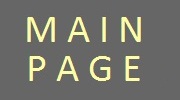The church is mentioned for the dirst time in 1363. In 14th century that was the only catholic temple among Jewish sinagogues. Next to the temple there was a mikveh and kirkut, Jewish cemetery. Such localisation caused many problems, the church was demolished several times (1407, 1496), finally the king John Albert moved the Jews from Krakow to nearby Kazimierz.
In 1418 the church was offered to Krakow Academy (Jagiellonian University). In the end of 16th century new order came to Krakow - Jesuits. The monks, due to the king Sigismund III Vasa, erected Saint Peter and Paul church and opened schools, so called Ignaciana. In XVI and XVII centuries they competed bravely with the Krakow Academy. Contemporary temple is an answer to the activity of the Order of Jesus. In the end of 17th century profesors of the University asked the king John III Sobieski for donation, in 1689 new temple began erecting. The profesors employed Tylman van Gameren. The architect erected three naves temple with transept, patterning the church San Andrea della Valle in Rome. The side aisles are reduced to three chapels on the left and three on the right side. The interior was decorated by Baltazar Fontana (stuccos) and Karol Dankwart (polychromies). In 1703 the bishop Kazimierz Łubieński consecrated the church.
The church has beautiful facade with statues of the saints: Bernard from Siena, John from Kęty, Kazimierz and Florian. The interior reflects splendidity of the University. The columns are decorated with twelve Apostols but the Apostols are marked not with their real names but with precious stones. It is information about apocaliptic Jerusalem build on twelve founds made out of precious stones. The polichromy on the vault presents apocaliptic scenes too: Apocaliptic Lamb of God, Twenty-Four Elders of Apocalypse, Seven Seals of Revelation, and Revelation of Saint John of Patmos.
In the right wing of the transept, saint John from Kety is buried. His coffin is hold by four angels, personification of the university faculties. The sarcophagus is surrounded by four columns and sculptures of saints on their heads: John Baptist, John Evangelists, John from Damascus and John Chrysostom. The polychromies in the transept inform about the miracles of st. John from Kęty, on the vault the story of making broken pot, on the walls the story when st. John gave his coat to a beggar, soon Virgin Mary gave him her coat.
In the corners of the transept there are two bunchuks - a kind of flags kept by Turkish knights. The bunchuks come from the Battle of Vienna in 1683, after the battle the king John III Sobieski offered the bunchuks to the church.
Right side of the transept is decorated with stuccos presenting Feast of the Cross. The stucos harmonise with the polichromy, Finding the Cross by saint Helena and Feast of the Cross are painted.
There is six chapells decorating the church:
• Saint John Baptist - the chapell is painted by Innocenti Monti in 1700. The altar is decorated with painting by Karol Dankwart presenting 'Baptism in Jordan river'. The stucos present 'Saint John Baptist in the desert', 'Cuting the head of Saint John' and 'Head of Saint John on a plate'.
• Saint Peter - the chapell founded by the canon Piotr Orłowski. Painting in the altar presents 'Liberation of Saint Peter from prison' (work by Innocenti Monti).
• Immaculata - the chapell is painted by Innocenti Monti in 1699 and decorated by statue of Virgin Mary. Above the Maria's head thee is hidden window. The polychromies present ![]() Judith killing Holofernes and
Judith killing Holofernes and ![]() Estera with Achashwer.
Estera with Achashwer.
• Saint Catharina from Alexandria - the chapell is painted by Innocenti Monti in 1700. In the altar there is relief of sword and weel - attributes os Saint Catharina. The painting reflect advocation of the chapel: ![]() ''Death of Saint Catharina' and
''Death of Saint Catharina' and ![]() 'Mistic marriage of Saint Catarina'.
'Mistic marriage of Saint Catarina'.
• Saint Joseph - the chapell is painted by Innocenti Monti in 1699. Painting in the altar presents Saint Joseph with the Child and angel. The polychromy presents 'Escape to Egypt' and 'Dream of Saint Joseph'.
• Saint Sebastian - the chapell founded by the Sebastian Piskorski. The decorations reflect legends related with Saint Sebastian. Besides, on the wall there are painted: ![]() Saint Roch and
Saint Roch and ![]() Saint Alex. There are presented also Saint Irene, Marceline, Marco, Lucyna.
Saint Alex. There are presented also Saint Irene, Marceline, Marco, Lucyna.
Pay attention to :
• Baltazar Fontana's stuccos
• Karol Dankwart's polychromies
• Saint Jan Kanty's altar
• Turkish panaches
• Nicolas Copernicus's monument
• Juliusz Slowacki's epitaph













